Greetings. Today was a 16 mile hike, and giving us a total of 286 miles walked so far. Here’s the data: 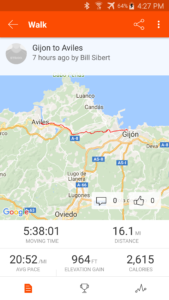
We delayed the start of today’s hike until 9:30. The hope was to avoid the lingering rain. As we stepped outside, this is what we saw: 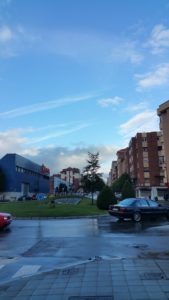
Yes indeed, it’s sunshine! Just to make sure we didn’t get too cocky, about 15 minutes after this photo it rained for about 10 minutes. That was it for today. What a gift!
The views through this region continue to be beautiful.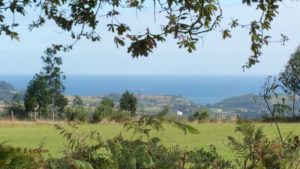
There are some unique architectural features in this region. The first is an Horreo. This is a building built on stilts, with very narrow tops set on platforms and is used for storage of grain. The intent was to keep the varmints out. This Horreo has been modified with a staircase accommodate varmints, or in-laws who decide to visit. 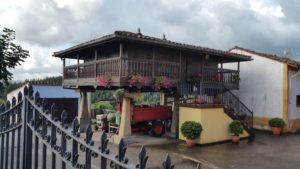
The second architectural structure is a lavadero. This concrete structure serves as a community clothes washing room. 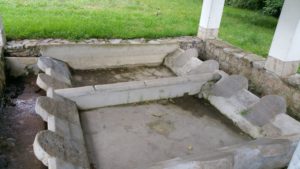
One other thing of note is this unusual flower that Diane found on the hike. If any of our readers know what type of flower this is, please let us know.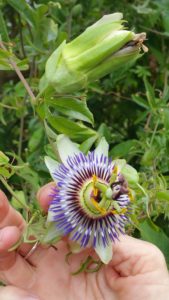
Yesterday, revisited: After spending hours upon hours trying everything that we own last night, Diane and I had a conversation about what worked and what didn’t work yesterday. We both really felt exhilarated with hike, and the dynamic weather, but decided that a little exhilaration goes a long way. Yep, we will enjoy the next time it happens, but we will also not hope for the next time too soon.
Our second observation has to do with the nuclear option. You really have to have an ultimate weapon, when all else fails, to rain of yesterday’s intensity. Diane carried a poncho but didn’t use it. Bill does not currently own a poncho, but will buy one for occasions like that. Both of us have vowed to use the Poncho when weather conditions are like yesterday.
We continue to meet very interesting people on the Camino. Diane and I call them God’s appointments. Someday, we will tell the stories. Today is not that day.
Hope all is well for everyone at home.

Google reverse image search says that’s a species of “passiflora.” Not originally native to Spain, but now grows wild. https://goo.gl/4xvQQe
Thank you!
I found two differing histories for the “Passionflower” and a little medical history:
(1) In 1569, Spanish explorers discovered passionflower in Peru. They believed the flowers symbolized Christ’s passion and indicated his approval for their exploration.
(2) Passionflower was first discovered by Spanish Jesuits in Peru in the 17th century, and was named for its resemblance to the crucifixion of Christ.
The Peruvians used the flower as a sedative. Once it spread to Europe, it was used to treat restlessness and agitation, along with other ailments like indigestion and seizures. Today, it’s commonly used to treat anxiety.
Passionflower was formerly approved as an over-the-counter sedative and sleep aid in the U.S., but it was taken off the market in 1978 because safety and effectiveness had not been proven. However, passionflower may still be available alone or in combination with other herbal products.
What a team, you and Micah! Well next time were worried about what that flower is, we’ll chew on some, then slurp on it!